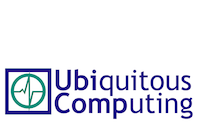Optimal Preprocessing of Raw Signals from Reflective Mode Photoplethysmography in Wearable Devices
Florian Wolling, Sudam Maduranga Wasala, and Kristof Van Laerhoven
Description
In our research [1], we highlight the importance of benchmarking algorithms on actual raw signals from reflective mode photoplethysmography (PPG). To demonstrate and evaluate the impact of preprocessing on pulse peak positions and the performance of peak detection algorithms, an expert rater manually annotated the peak labels to serve as ground truth for the publicly available dataset of Biagetti et al. [2]. We encourage researchers to use the dataset of raw PPG signals in combination with the supplementary annotations from our research [1] to benchmark their own algorithms as well as machine learning approaches. Provided as serialized Python Pickle *.p and comma-separated values *.csv, the annotation files of the 21806 diastolic pulse onset labels are available for download below.
Download
The supplementary annotations as well as the original dataset of raw PPG signals can be downloaded via the following links:
- Supplementary Annotation Dataset (350 kB) [1]
- Illustrations for color-blind (5.2 MB) [1]
- Original Dataset of Raw PPG (ScienceDirect, 29 MB) [2]
Citation
When using our annotations for your work, please consider providing the following two references in your bibliography, since our work [1] is based on the original dataset of Biagetti et al. [2].
[1] Optimal Preprocessing of Raw Signals from Reflective Mode Photoplethysmography in Wearable Devices, Wolling, Florian and Wasala, Sudam Maduranga and Van Laerhoven, Kristof. In 2021 43rd Annual International Conference of the IEEE Engineering in Medicine & Biology Society (EMBC), 2021, Virtual Event, November 2021, IEEE, 2021. [pdf][scholar][bibtex][doi]
[2] Dataset from PPG wireless sensor for activity monitoring, Giorgio Biagetti, Paolo Crippa, Laura Falaschetti, Leonardo Saraceni, Andrea Tiranti, Claudio Turchetti. Data in Brief, Volume 29, 105044, 2020, ISSN 2352-3409. [doi]
Disclaimer
The provided, publicly available annotation data supplement the original recordings of Biagetti et al. [2], but do not themselves contain them. You may use the annotations, manually set by an expert rater, as a reference for scientific, non-commercial purposes, provided that you give credit to the owners when publishing any work based on it. We would also be very interested to hear back from you if you use our annotations in any way and are happy to answer any questions or address any remarks related to it.
